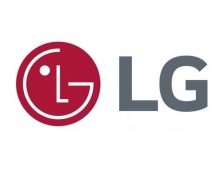
LG Develops TV Phone for European 3G Standard
LG Electronics, the world's fourth-largest mobile handset maker, said Wednesday it has developed a new mobile phone that allows users to watch terrestrial digital media broadcasting (T-DMB) while on the move.
The new device, compatible with Europe's third-generation (3G) mobile standard, is aimed at cracking
into the continent's potentially lucrative mobile television market, currently dominated by technology
known as digital video broadcast for handheld (DVB-H) that was developed by the world's biggest handset
maker Nokia, the Korean company said in a statement.
"With the development of a W-CDMA phone for mobile TV services, we have a chance to lead in the early European mobile phone TV market," LG said.
LG claims an industry first in developing the W-CDMA phone that incorporates the so-called T-DMB technology.
T-DMB technology was initiated by the South Korean government to enable broadcasters to broadcast digital TV programming to phones via conventional terrestrial transmitters.
LG plans to introduce the new phone in the European market next year in the wake of the 2006 World Cup finals in Germany.
Live TV services on mobile phones are still in their infancy in most parts of the world.
Big-name telecommunication companies are now scrambling to take the lead in the potentially lucrative market.
U.S. wireless chipmaker Qualcomm Inc. is pushing its own mobile TV standard called MediaFlo.
And South Korea's SK Telecom Co., along with Japan's Toshiba Corp., launched the world's first satellite-based mobile TV service in May.
However, SK Telecom's satellite TV venture has yet to win much attention from customers here, mainly because of a lack of available handsets, high costs and narrow network coverage.
"With the development of a W-CDMA phone for mobile TV services, we have a chance to lead in the early European mobile phone TV market," LG said.
LG claims an industry first in developing the W-CDMA phone that incorporates the so-called T-DMB technology.
T-DMB technology was initiated by the South Korean government to enable broadcasters to broadcast digital TV programming to phones via conventional terrestrial transmitters.
LG plans to introduce the new phone in the European market next year in the wake of the 2006 World Cup finals in Germany.
Live TV services on mobile phones are still in their infancy in most parts of the world.
Big-name telecommunication companies are now scrambling to take the lead in the potentially lucrative market.
U.S. wireless chipmaker Qualcomm Inc. is pushing its own mobile TV standard called MediaFlo.
And South Korea's SK Telecom Co., along with Japan's Toshiba Corp., launched the world's first satellite-based mobile TV service in May.
However, SK Telecom's satellite TV venture has yet to win much attention from customers here, mainly because of a lack of available handsets, high costs and narrow network coverage.





















